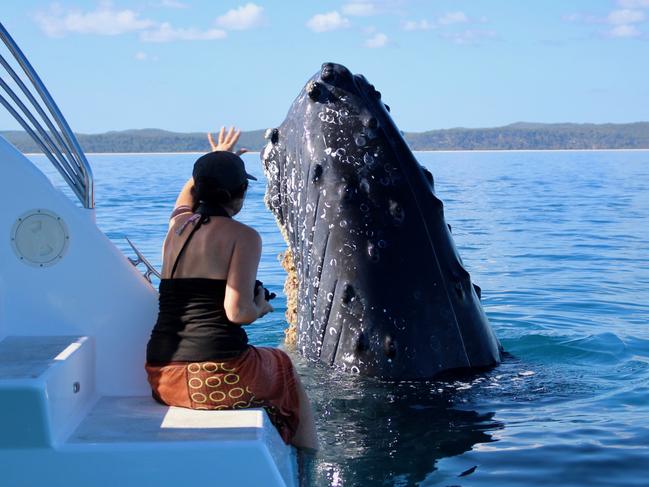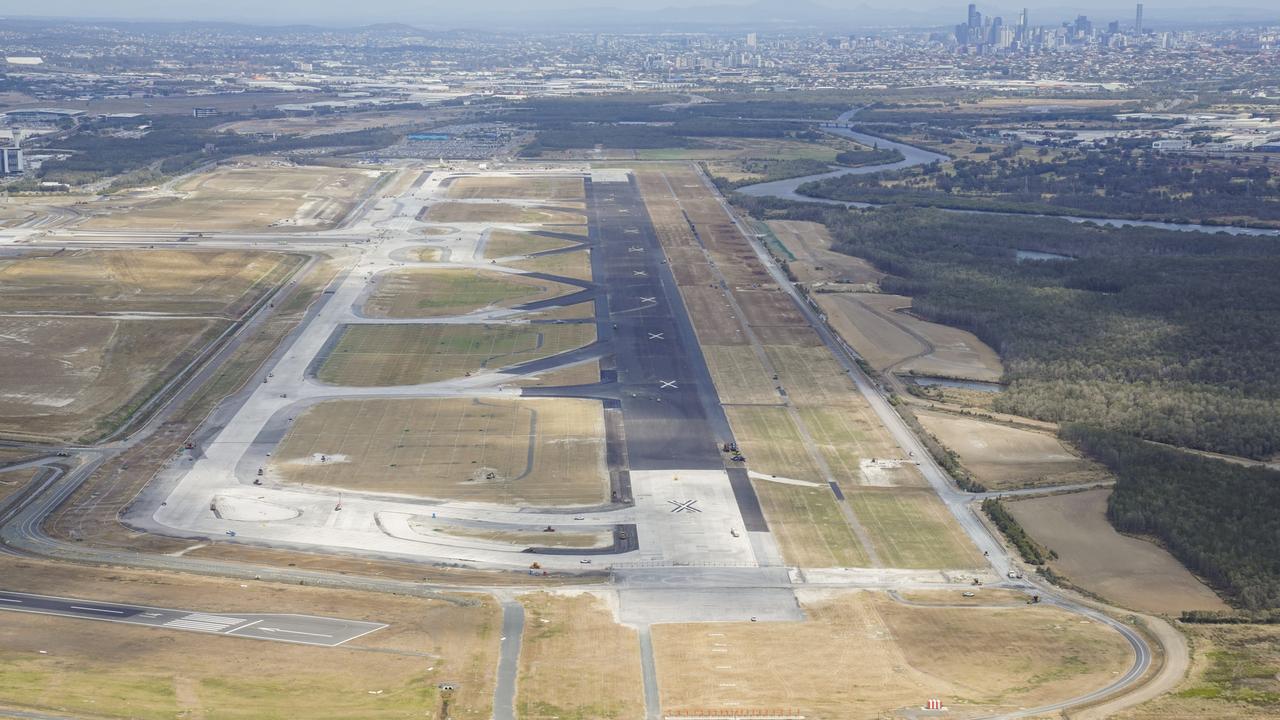Qld takes the plunge to grow its $6b dive industry
Queensland is out to increase its share of global dive tourism, and these are the spots that will help it succeed. SEE THE LIST

Future QLD
Don't miss out on the headlines from Future QLD. Followed categories will be added to My News.
QUEENSLAND tourism leaders are taking the plunge to lure the world’s scuba divers to create an even bigger cash splash for the state’s almost $6 billion “blue economy”.
Every year, six million people travel internationally for a dive holiday, but Queensland attracts only 5 per cent of them (345,000 divers).
Gold Coast tourism: Artificial dive site, beach bars on agenda
Sunshine State is No.1 with Aussies, but price a barrier
Noosa to put up the ‘full’ sign as over-tourism becomes issue
“We are determined to build that market share,’’ Tourism and Events Queensland chief Leanne Coddington told The Courier-Mail.
“Queensland is home to some of the world’s best dive spots.
“From the diversity of life on the Great Barrier Reef, to internationally renowned wrecks, including the SS Yongala and ex-HMAS Tobruk, to dive sites in southern Queensland, including Wolf Rock and HMAS Brisbane, there is huge opportunity for Queensland in the global dive market, which is currently growing at an annual rate of 16 per cent.”
TEQ this year partnered with two of the world’s most influential dive organisations – PADI and Scuba Diver Life – to lift the profile of the Queensland dive scene and better promote the world-class undersea jewel in our tourism crown.
“We can further capitalise on these high-value travellers because while they’re here to dive, they’re also keen to experience everything else Queensland has to offer.
“Already that content has reached more than one million divers worldwide and we’ve supported that initiative by having a strong presence at the world’s largest dive shows,” Ms Coddington said.
These include the Asia Dive Expo in Singapore and the Diving Equipment and Marketing Association Show in the US in November.
“The Great Barrier Reef will always be a huge international drawcard for Queensland,” the TEQ boss said.
“Our recent scUber campaign has furthered the message that it is teeming with life and is a perfect destination for a diving holiday.”
ScUber, using the world’s first rideshare mini-submarine to take tourists for a ride on the Reef at Heron Island and Agincourt Reef near Port Douglas, reached a potential global audience of more than three billion people in a marketing coup.
Quicksilver chief Tony Baker, who heads the nation’s largest reef boat fleet based out of Cairns, said it was yet to be seen how that would translate into visitor numbers.
“We’re going through a slow period, we’ve had a challenging time with wet and windy weather, and times are tight,’’ Mr Baker said.
“Domestically, it’s been soft and the Chinese market has been soft.”
But the US, Japan and the youth market out of the United Kingdom had shown positive growth, he said.
“Hopefully, we’ll see a surge in numbers over the July holiday period.
“It’s amazing how the reefs are bouncing back and we need to get that positive message out there.”
Reef operators report figures are down by as much as 20 per cent this year and some blame greenie activists for damaging trade.

Australian Institute for Marine Science chief executive Paul Hardisty said the Reef had been “held captive by pessimism”.
“We’re at the front-end of reef science, we’re not naive, our eyes are not closed, we know reefs around the world face some serious challenges in coming decades,” Mr Hardisty said.
“But it is still amazing.
“We want as many people as possible to come and enjoy and wonder and marvel at this most incredible thing on the planet,’’ he said.
“And the more people who come here and visit it, and support it, and care about it, the better chance it’s got for future survival.’’
People tend to think of the reef and tropical waters for diving, but Moreton Bay in the state’s south-east corner is home to 47 sunken vessels to explore.
There are 15 vessels alone at the Tangalooma Wrecks just off Moreton Island.
Coral is now starting to form in and around the old ships, providing a haven for more than 100 species of fish and sometimes dolphins, wobbegongs and dugongs.
At Curtin Artificial Reef, the Underwater Research Group of Queensland has been sinking large vessels, cars, tires and pontoons since 1968 to create a haven for the local tropical fish.
And Flinders Reef is argua bly one of the most beautiful dive sites in Queensland, with pristine conditions and stunning visibility, as well as the highest number of coral species of any subtropical reef system along Australia’s east coast.


